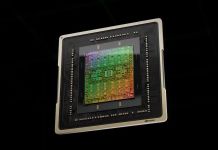Yesterday we reported about a new discovery that made it possible to create a memory with enormous capacity by adding water. Now an even more interesting technology has surfaced. It’s namely a small company from Silicon Valley that has developed a technology for optimizing the power consumption of circuits and especially processors. Multigig Inc. has managed to make the semiconductor clocks more efficient. The clock signal is a vital part of a microprocessor and this is sent as an electric pulse to parts of a chip to make these sync. The frequency of the clock signal (how often it is sent) is often simply called clock frequency and is something that has been commonly used to estimate a processor’s performance. Lately these frequencies has come to mean less and less though, but the function is still the same.
One of the reasons that you haven’t been able to increase the frequencies forever is that the pulse that is sent at each cycle is practically wasted power.
“One problem is that the energy from timing pulses flows in a one-way pattern through a chip until it is discharged, wasting most of the power. Clocks account for 50% or more of the power consumption on some chips, estimates Kenneth Pedrotti, an associate professor of electrical engineering at the University of California at Santa Cruz.”
John Wood who founded Multigig in 2000 has found a way to make this process more efficient as a large portion of the electric pulse can be returned and not just go to waste. This technology will make it possible to reduce the power consumption of a chip with 75% compared to regular handling of the cycles.
If they succeed in getting this technology to work with PC processors it will not take long before Multigig will skyrocket through the IT roof. But even if it would work it will take a number of years before we will actually see it being used.
“This is a dramatic way of clocking circuits,” said Steve Ohr, an analyst at Gartner Inc. He cautioned it could take years to get existing manufacturers to modify existing products to take advantage of the new technology. “Intel is not going to redesign the Pentium tomorrow because of it,” he said.

















